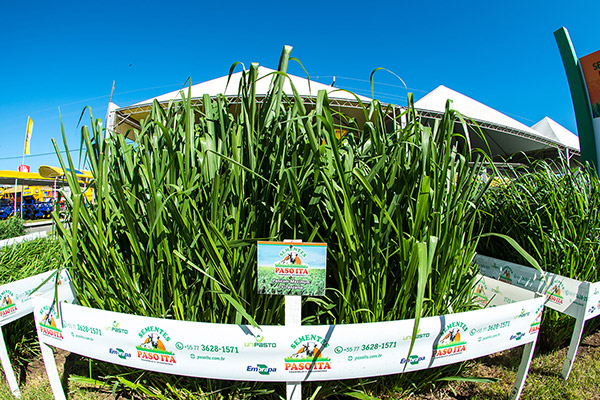
A grass that is demanding of soil fertility. Good regrowth capacity after cutting, as long as apical meristem is respected. Excellent response to fertilizers. Larger leaf percentage than Colonião grass. Excellent use for grazing, hay and silage. Tanzania grass is easier when handling due to its smaller build, and its leaf abundance allow for uniform grazing in its whole area, without danger of formation of unhealthy turf rejected by the animals.

Medium drought and cold tolerance.
According to soil analysis.
Broadcast seeding or in 20 to 40 cm in lines, with seed compaction. Seeding depth 0.5 to 1 cm. Germination from 7 to 28 days, depending on weather conditions. Time necessary before use ranges from 90 to 120 days after emergence.
Tanzania grass production potential depends on soil fertility and grass handling based on apical meristem preservation and the nitrogen fertilizer used.
| Usage Grazing, hay and silage |
Digestibility Excellent |
| Intercropping All legumes |
Palatability Great |
| Life cycle Perennial |
Altitude Over 1500 m |
| Drought tolerance Good |
Annual precipitation Over 1000 mm |
| Leafhopper tolerance Good |
Growth habit Clumping |
| Waterlogging tolerance Medium |
Germination 7 to 28 days |
| Tolerance to cold Good |
Planting depth 0,5 to 1 cm |